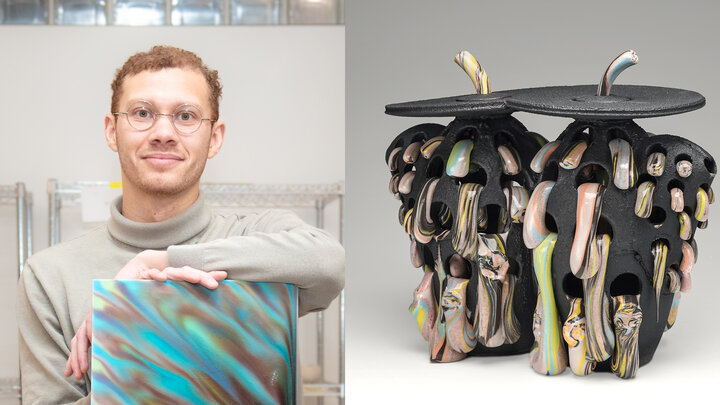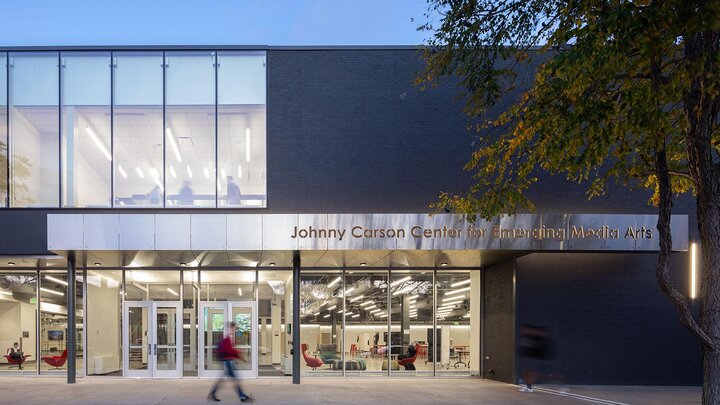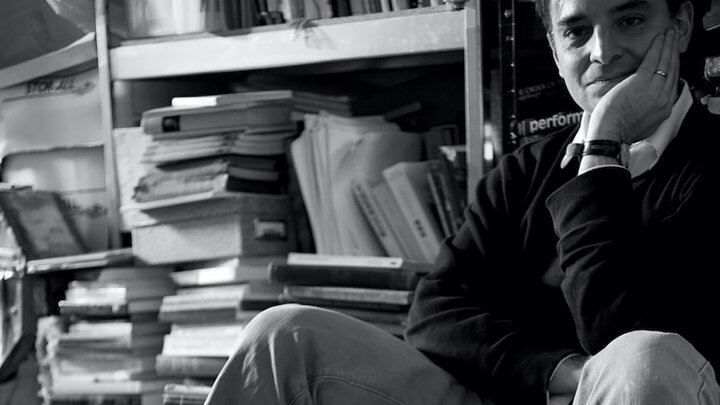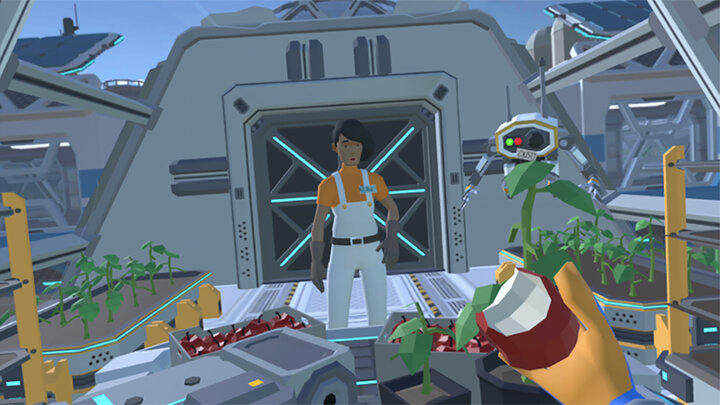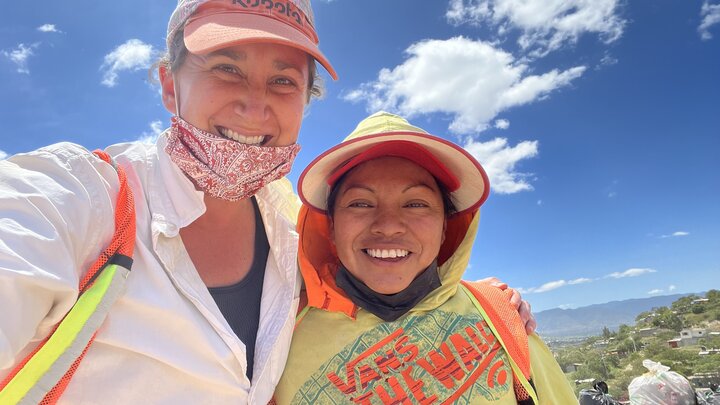Lincoln, Neb.--School of Art, Art History & Design alumnus Maxwell Henderson (M.F.A. 2023) was one of 20 artists selected from nearly 700 applicants as Ceramics Monthly’s Emerging Artists.
He and the other finalists are featured in the May issue of Ceramics Monthly magazine. Henderson’s work is featured on the cover of the magazine.
“Learning that I was selected as one of Ceramics Monthly’s Emerging Artists and seeing my work featured on the cover of the May issue was incredibly exciting and reaffirming,” Henderson said. “Over the years, I’ve watched many talented peers, even those with MFAs, gradually stop making art, which has left me with this persistent fear that it could eventually happen to me, too. But receiving this recognition serves as a reminder that I’m on the right path.”
Associate Professor of Art Margaret Bohls had high praise for Henderson’s work.
“Max Henderson is one of the most curious and technically proficient makers we have had in the ceramics program,” she said. “He has an extremely well developed and unique aesthetic vision, with a particular interest in natural beauty and the ways that it can be represented phenomenologically. Max’s work is based on what can happen when ceramic materials are fired. He has made a career of finding new and different ways to use ceramic raw materials to create colors, textures, and visual and physical movement through unusual firing techniques.”
She said it was a prestigious honor for Henderson.
“Ceramics Monthly magazine is the premier trade publication for ceramic art in the U.S.,” Bohls said. “The CM Emerging Artist award is given to just ten to fifteen artists annually and is juried from a national pool of applicants. This award is just the latest in a list of credentials for Max whose work was included in the National Council on Education in the Ceramic Arts (NCECA) juried student exhibition in 2019, 2020, and 2021. I am sure he will continue to see great success in his art career.”
Henderson said he’s not exactly sure yet what this recognition will mean for his career.
“I’m genuinely grateful and humbled that a publication with such a significant platform found my work deserving of the cover. This recognition gives me a lot of momentum—but ultimately, it’s up to me to determine how I use that momentum to shape my career moving forward,” he said.
Henderson is currently at Red Lodge Clay Center in Red Lodge, Montana, completing the final months of a two-year residency.
“I’m preparing for our exit exhibition alongside the other three residents,” he said. “It’s been a really special experience—not just because Red Lodge is incredibly beautiful, but also because of the tight-knit community that forms here.”
His core group includes four resident artists and four staff members.
“It’s a small, supportive environment that feels both grounding and inspiring,” Henderson said. “The town itself is remote, the only chain restaurant is a Subway, and the nearest traffic light is 45 minutes away—which means there are very few distractions. That isolation has actually been a gift. It’s allowed me to fully focus on my studio practice. Red Lodge Clay Center offers a lot to artists in terms of support, opportunity and space to grow.”
Henderson started in ceramics by taking a ceramics class his freshman year of high school to fulfill an art credit.
“I didn’t care about art at all until I touched clay for the first time,” he said. “The first pot I made changed everything. It gave me a sense of control and self-worth I hadn’t felt before. I’ve been making most days since 2012.”
Bohls said Henderson always finds his own path and will follow it as far as it will take him.
“Max essentially raised himself from an early age,” she said. “He put himself through undergraduate school at Arizona State University, where he excelled, and from there participated in a series of residencies and a post-baccalaureate program at Penn State University before being accepted from a highly competitive pool of applicants to the MFA program in ceramics at UNL.”
Henderson said his work explores the push and pull between structure and release.
“I build wheel-thrown, segmented vessels that are precise and intentionally rigid—often coated in matte black glaze and perforated with clean, uniform openings,” he said. “Into those, I insert rolled glaze logs that are meant to fit neatly, but once fired, they shift, stretch, bend or spill out entirely. That moment of transformation—where the material breaks from its original form—is central to what I’m exploring.”
Henderson said it reflects his own upbringing.
“This relationship between control and disruption reflects my own experiences growing up in systems shaped by poverty, instability and cultural expectations as a biracial person,” he said. “There’s a deep need for order and validation that lives alongside an equally deep need to resist and reshape. I’m interested in how materials can hold that same tension—how something made to conform can also push back and redefine the structure around it.”
Henderson said growing up, he didn’t feel joy often. He got straight A’s in school, but it was easy and boring.
“The first time I touched clay, I was terrible at it, but I had so much fun,” he said. “That contrast made me realize how rare that feeling was for me. I found myself investing hours outside of class just to get better, not because I had to, but because I wanted to. When my first piece came out of the kiln, the glaze didn’t turn out the way I expected, but I felt pride anyway. I started to understand what it meant to shift perspectives—to be surprised and to grow from that surprise. It became this blend of creativity and experimentation, like the scientific method, but visual, tactile and deeply personal.”
At first, the technical side of ceramics validated his interest.
“But what’s kept me in clay all these years is its connection to humanity,” Henderson said. “I still remember the smell of my high school studio. I still recognize the sulfurous scent of the glaze lab, which I later learned was likely from organic materials, like bone ash, breaking down. Back then, I couldn’t explain the magic I felt (or smelled), but I knew it was there. Clay became a record of technical progress and creative curiosity. It showed me I could make something useful, which made me feel useful.”
It also took him into spaces and communities that he may not have found otherwise.
“I’ve shared meals because of clay, found mentors and learned to romanticize the mundane as a survival skill under circumstances of scarcity,” he said. “A lot of people speak about clay as if their love for it was inevitable. But for me, it was circumstantial and delicate. The right teacher, the right moment, the right kind of spark. If I’d been placed in a different classroom that year, maybe this wouldn’t have happened. But it did.”
This September, Henderson will be joining the American Museum of Ceramic Art in Pomona, California, as a long-term resident.
“The energy of the art world in and around the museum really excites me, and I’m looking forward to becoming part of that,” he said. “Right now, I’m living and working in a small mountain town in Montana, and while it’s been a great place to focus, the audience here doesn’t always connect with the kind of vibrant, visually eclectic work I make. So I’m looking forward to being near Los Angeles where that kind of visual language feels not only understood but celebrated.”
He encourages art students to take advantage of every opportunity and to take care of themselves.
“If there’s one thing I’d tell current students, it’s this—apply for every grant you can, and don’t take out loans unless it’s absolutely necessary,” he said. “You don’t have to earn the right to give yourself grace—just give it. Get sleep. Eat. Go on a walk. I didn’t do those things enough. Your thesis show might feel like it’s the most important thing in the world right now, and I get that—but truthfully, no one’s asked to see mine since I graduated. What’s more important is taking care of yourself in a way that lets you keep making work after school ends. I’m still learning how to do that.”
